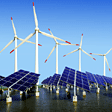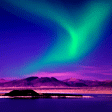- Home >
- Our Actions >
- Ambassador report
7
Comments
About Nuclear Waste. |
|---|
|
by Chabala Chisenga | 14-05-2017 03:28
|
|
Nuclear waste is the material that nuclear fuel
becomes after it is used in a reactor . It looks exactly like the fuel that was loaded into the reactor assemblies of metal rods enclosing stacked-up ceramic pellets. But since nuclear reactions have occurred, the contents aren?t quite the same. Before producing power, the fuel was mostly Uranium (or Thorium ), oxygen, and steel. Afterwards, many Uranium atoms have split into various isotopes of almost all of the transition metals on your periodic table of the elements. The waste, sometimes called spent fuel, is dangerously radioactive , and remains so for thousands of years. When it first comes out of the reactor, it is so toxic that if you stood within a few meters of it while it was unshielded, you would receive a lethal radioactive dose within a few seconds and would die of acute radiation sickness within a few daysHence all the worry about it. In practice, the spent fuel is never unshielded. It is kept underwater (water is an excellent shield) for a few years until the radiation decays to levels that can be shielded by concrete in large storage casks. The final disposal of this spent fuel is a hot topic, and is often an argument against the use of nuclear reactors. Options include deep geologic storage and recycling. The sun would consume it nicely if we could get into space, but since rockets are so unreliable, we can?t afford to risk atmospheric dispersal on lift-off. Nuclear reactors are typically loaded with Uranium Oxide fuel, UO . Neutrons are introduced to the system, and many of them are absorbed by uranium atoms, causing them to become unstable and split, or fission, into two smaller atoms known as fission products. Sometimes, the uranium absorbs a neutron and does not fission, but rather transforms to a heavier isotope of uranium, such as U-239. U-239 beta-decays to Np-239, which in turn beta-decays to Pu-239. The heavier nuclide may then absorb another neutron to become an even heavier element. These heavier atoms are known as transuranics. Nuclear waste, with regard to nuclear reactors, is the collection of nuclides left over after a reactor has extracted some energy out of nuclear fuel. Many of the isotopes are very radioactive for a very long time before they decay to stability. The radioactivity causes the spent nuclear fuel to continue emitting heat long after it has been removed from the reactor. A few of the radioactive isotopes in the mix of spent fuel are gaseous and need to be carefully contained so that they do not escape to the environment and cause radiation damage to living things. Other types of nuclear waste exist, such as low level waste from other applications. This discussion will focus on high-level waste (HLW), the spent nuclear fuel from nuclear power reactors. |
|
|










 Previous : Argentina takes a step backwar...
Previous : Argentina takes a step backwar...









7 Comments
thanks for sharing
Posted 06-02-2018 22:06
good report
Posted 06-02-2018 22:06
Thank You All For The Comments.
Posted 24-06-2017 07:55
Hi Chabala! Thanks for sharing your report on nuclear waste. It is really informative and easy to understand:) There still is no clear answer for handling nuclear waste, and that's one of the important reason why many people are against nuclear waste. Hope this question could be answered in the future!
Posted 20-05-2017 10:21
Chabala, thank you for your report. This was a comprehensive and informative report. I could well grasp the informations about nuclear reaction and waste. You mentioned that the radioactive isotopes should be well handled, but, as you know, disasters always happen. I wish you could tell us more about difficulties of handling isotopes and why such disasters happen.
Posted 15-05-2017 14:56
Thank you for sharing with us! Very informative!
Posted 14-05-2017 19:50
Thank you Chabala for this informative article on Nuclear Waste.
Posted 14-05-2017 04:36